
Durrington or High Salvington Windmill is a Grade II listed post mill in High Salvington, Sussex that has been restored and is in full working order. The mill stands 320 feet (98 m) above sea level and is able to take advantage of incoming sea winds.

Hassocks is a village and civil parish in the Mid Sussex District of West Sussex, England. Its name is believed to derive from the tufts of grass found in the surrounding fields.
The Clayton Windmills, known locally as Jack and Jill, stand on the South Downs above the village of Clayton, West Sussex, England. They comprise a post mill and a tower mill, and the roundhouse of a former post mill. All three are Grade II* listed buildings.
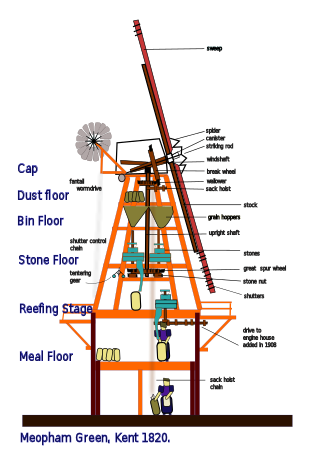
This glossary of mill machinery covers the major pieces of machinery to be found in windmills, watermills and horse mills. It does not cover machinery found in modern factories.
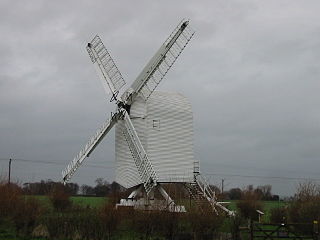
Chillenden windmill is a grade II* listed open-trestle post mill north of Chillenden, Kent, England. It is the last post mill built in Kent.

Keston Windmill is a grade I listed Post mill in Keston, formerly in Kent and now in the London Borough of Bromley. The mill was built in 1716 and is conserved with its machinery intact but not in working order.
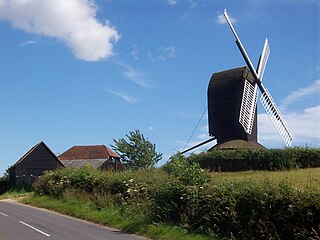
Rolvenden Windmill is a grade II* listed Post mill on the B2086 road west of Rolvenden in southeast England. It is maintained as a memorial to a local resident killed in a road accident in 1955.
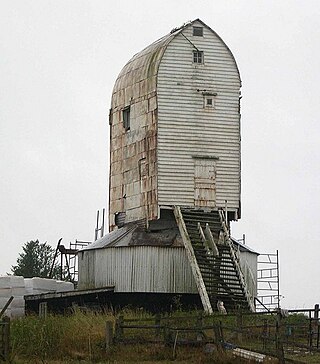
New Mill is a Grade II* listed post mill at Cross in Hand near Heathfield, East Sussex, England. It was the last windmill working commercially by wind in Sussex, ceasing work by wind in 1969 when a stock broke.
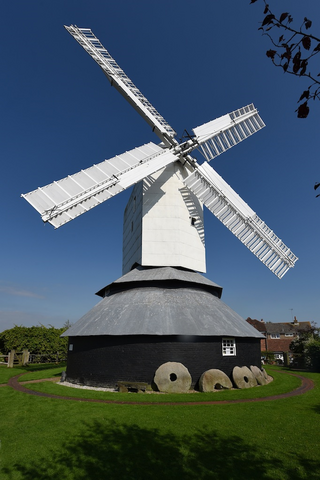
Windmill Hill Mill is a grade II* listed post mill at Herstmonceux, Sussex, England which has been restored and now operates as a working mill. The mill is open to the public on most Sundays from Easter until October.
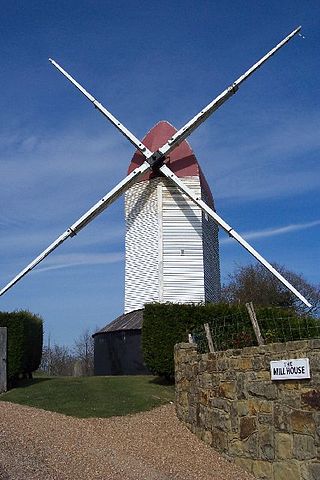
Argos Hill Mill is a grade II* listed post mill at Argos Hill, Mayfield, East Sussex, England

St Leonard's mill was a post mill at Winchelsea, East Sussex, England which was blown down in the Great Storm of 1987.
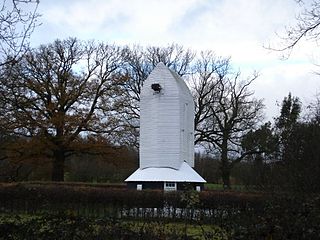
Lowfield Heath Windmill is a grade II listed post mill at Charlwood, Surrey, England which has been restored to working order.

Bragg's Mill, William Bragg's Mill, Bartlow Hamlet Mill or Stevington End Mill is a grade II listed post mill at Ashdon, Essex, England which has been restored.
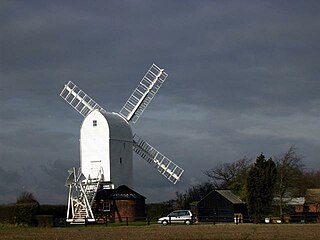
Aythorpe Roding Windmill is a Grade II* listed Post mill at Aythorpe Roding, Essex, England which has been restored to working order.

Fryerning Mill is a grade II* listed post mill at Mill Green, Fryerning, Essex, which has been restored.

Mountnessing Windmill is a grade II* listed post mill at Mountnessing, Essex, England. Built in 1807, it was most recently restored to working order in 1983.

Ramsey Windmill is a grade II* listed post mill at Ramsey, Essex, England which has been restored.

Upthorpe Mill is a Grade II* listed post mill and scheduled monument at Stanton, Suffolk, England, which has been restored to working order.

Garboldisham Mill is a Grade II* listed post mill at Garboldisham, Norfolk, that has been restored.

Huizermolen is a post mill in the Netherlands Open Air Museum, Arnhem, Netherlands which was built in 1919 and is in working order.

























